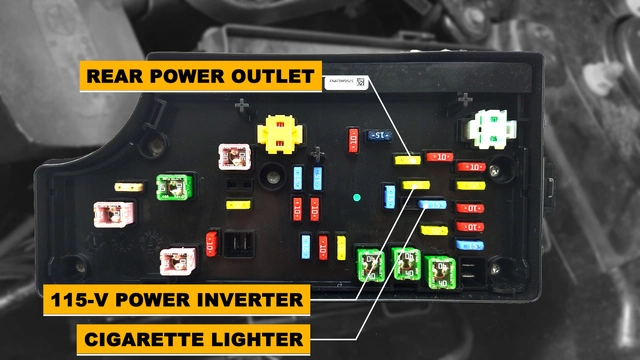Jeep Patriot Power Outlet Issues? Discover How to Resolve Them by Replacing the Fuse
Last Updated on September 19, 2023 by Nick
Hey what’s up guys! Is your Jeep Patriot’s power outlet not working? Don’t worry; it’s a common issue that can be easily fixed by replacing the fuse. In this comprehensive guide, we will walk you through the steps to diagnose and repair the power outlet in your Jeep Patriot, ensuring that you can charge your devices and use other electronic accessories without any hassle. So let’s get right to work.
Table of Contents
Understanding the Power Outlet Issue
Before diving into the solution, it’s crucial to understand why the power outlet in your Jeep Patriot might not be working. There can be various reasons for this problem, but one of the most common ones is a blown fuse.
Checking the Basics
Before we replace the fuse, let’s make sure we’ve covered the basics:
- Inspect the Device: Ensure that the device you’re trying to use is functioning correctly. Sometimes, the problem lies with the device itself.
- Check Other Outlets: Test other power outlets in your vehicle to rule out the possibility of a broader electrical issue.
- Inspect the Fuse Box: Locate the fuse box in your Jeep Patriot and inspect it for any visible damage or loose connections.
How To Replace the Power Outlet Fuse in the Jeep Patriot
Locating the Jeep Patriot Power Outlet Fuse
To access the Power Outlet fuse in your Jeep Patriot, you’ll need to locate the fuse box. In the 2007, 2008, 2009, 2010, 2011, 2012, 2013, 2014, 2015, 2016, and 2017 Jeep Patriot, you can find the power outlet fuse in the front hood fuse box. So here are the fuses that you need to check:
There are the three fuses that you’re going to want to check. The first one is fuse number 11, which is responsible for the front power outlet or cigarette lighter. Just next to it is fuse number 12. It’s a 20-amp yellow fuse responsible for the 115-volt power inverter. If your Jeep Patriot is equipped with one, it’s just under the middle console on the front side. And the last fuse is a fuse number 13. It’s a 20-amp yellow fuse responsible for the rear power outlet.
Removing and Inspecting the Fuse
Using a pair of needle-nose pliers or a fuse puller, gently remove the Power Outlet fuse. Inspect it closely for any signs of damage, such as a broken filament or discoloration. If you spot any issues, it’s time to replace the fuse.
Replacing the Fuse
To replace the fuse, simply insert a new one of the same amperage rating into the slot. Be sure to use the correct amperage to avoid electrical problems. Once the new fuse is in place, close the fuse box.
Test the Power Outlet
With the new fuse in place, test the power outlet by plugging in a device or charger. If it works, congratulations – you’ve successfully replaced the fuse!
Conclusion
So that’s how easy it is. Understanding the Jeep Patriot Power Outlet fuse location empowers you to troubleshoot and resolve power outlet issues swiftly. By following the simple steps outlined in this guide, you can keep your devices charged and your Jeep Patriot running smoothly.
Remember, safety is paramount when dealing with electrical components, so exercise caution during the process. We hope this article has been informative and helpful in your quest to maintain your Jeep Patriot’s electrical systems. Thanks for reading and see you next time.
Frequently Asked Questions (FAQs)
If your power outlet suddenly stops working, it’s a good idea to check the fuse first. A blown fuse is a common cause of this issue, and it’s relatively easy to replace.
It’s essential to use a replacement fuse with the same amperage rating as the one you’re replacing. Using the wrong amperage fuse can lead to electrical problems and potentially damage your vehicle’s electrical system.
Fuses typically don’t need frequent replacement unless there is a recurring issue. If you find yourself replacing fuses often, it’s a sign that there may be an underlying electrical problem that needs attention.
While a blown fuse is a common issue, other factors like loose connections, damaged wiring, or a faulty power outlet itself can also cause problems. If replacing the fuse doesn’t solve the issue, it’s advisable to consult a professional mechanic for a thorough inspection.

